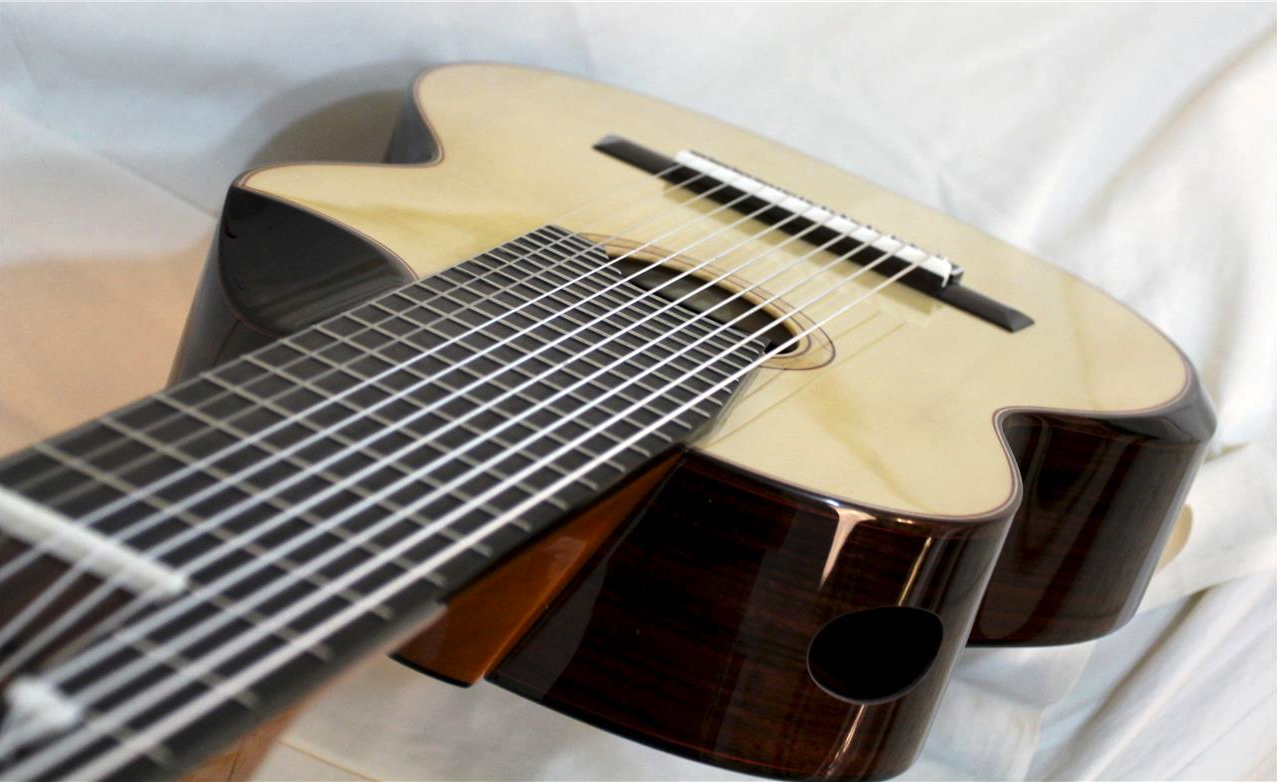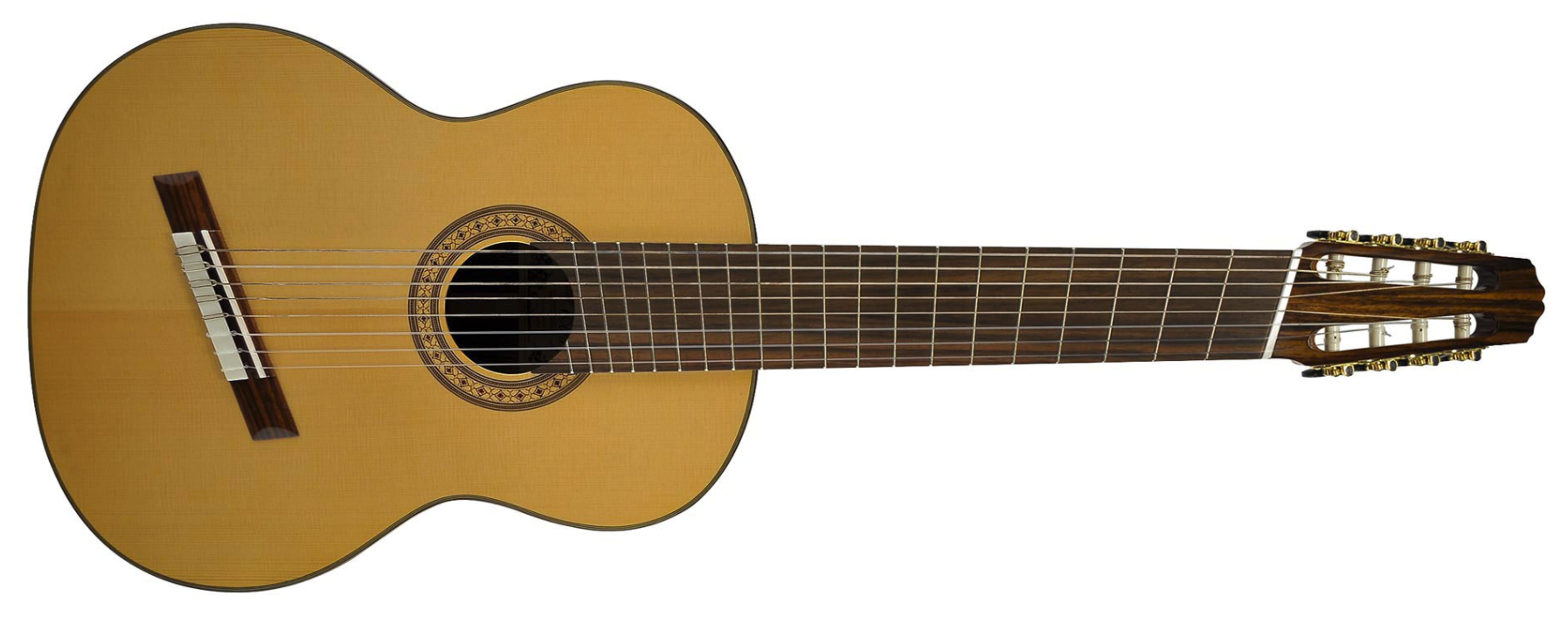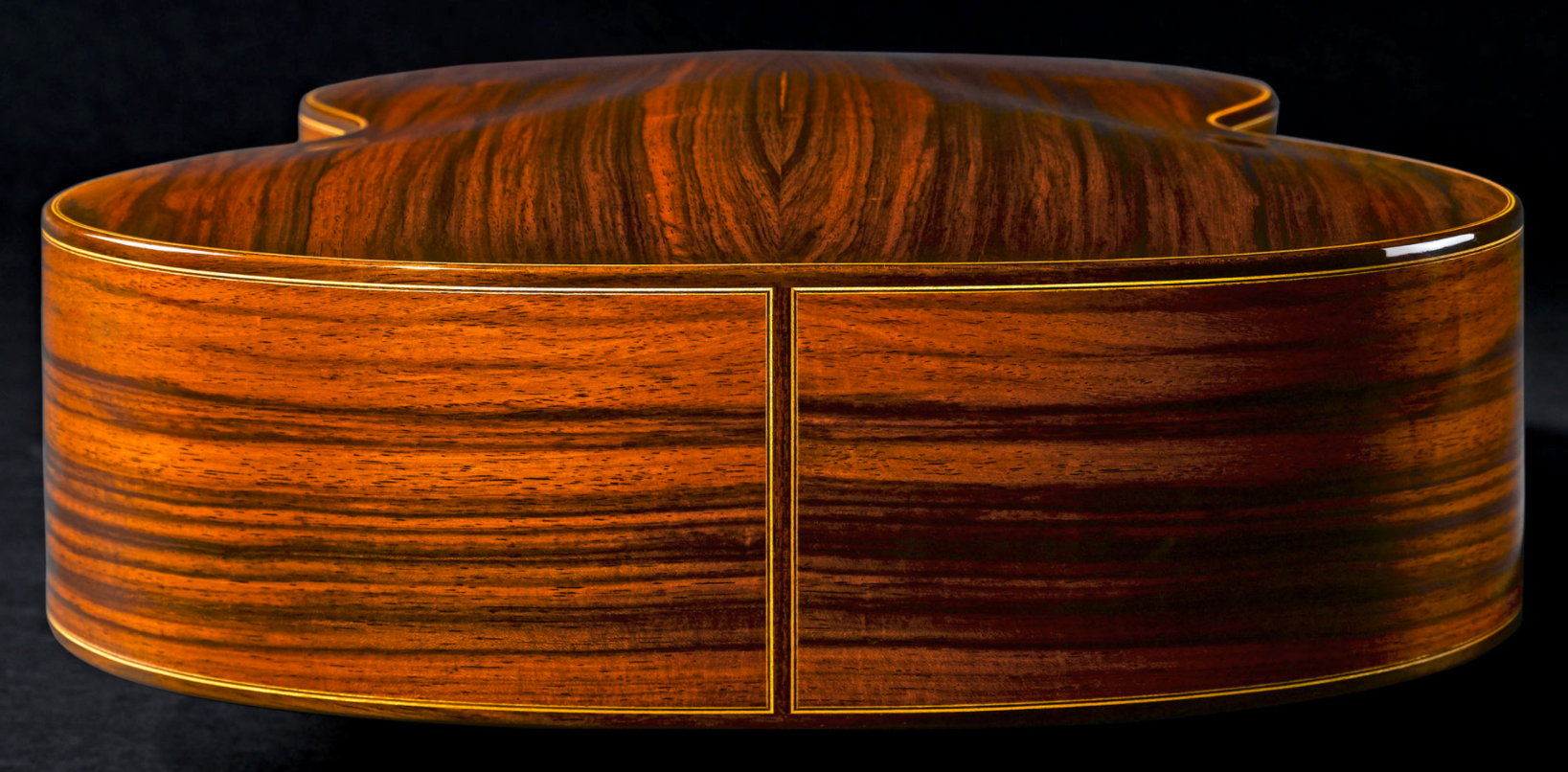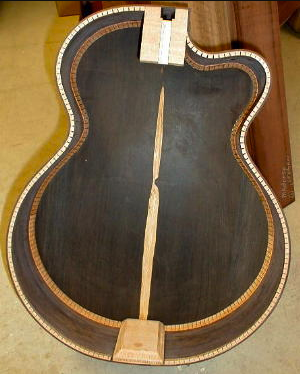Modern Classical Guitar Design Part 9: Reinforced Carbon Fiber Neck
If you've ever woken up one morning and found your guitar neck looking like a banana you're not alone. Should you buy a guitar with a carbon fiber-reinforced neck? Maybe...just maybe.
Introduction
Classical guitar necks usually aren't the most interesting conversation topic. Most of us are concerned with what wood it's made from, purfling, aesthetics, and of course the sound but from a luthiers point of view and as a player the neck is absolutely critical to the overall functionality and playability of the instrument.
Anyone that has played any kind of guitar that has neck issues such as warping will know the anguish of tuning and retuning constantly and never being able to get your guitar truly in-tune. On classical guitars this is caused by just one thing - a warped or damaged neck. Up until fairly recently classical guitars (especially those made by luthiers) avoided using any kind of truss rods either steel or carbon fibre or reinforcing of any kind in the neck, trusting in careful construction and material selection and superb care & handling by the owner to ensure a trouble-free neck after leaving the workshop. Unfortunately times have changed, people are traveling more and thus subjecting their instruments to wildly varying temperatures and humidity, materials that were available in the past are now either gone or restricted (CITES) or both causing luthiers to reevaluate how and what they use in their guitars to make them beautiful, mellifluous, and of course durable enough to handle the rigours of the modern world.
Enter Carbon Fibre Rods
Carbo Fibre isn't a new material at all - it's been around since 1879! Most of us really only came to know it commercially when it started to appear in expensive sports cars & bikes. Its commercial applications soon became widely known and it gradually started to make an appearance in many different industries including the music instrument industry and more specifically the guitar construction industry.
Carbon fibre also isn't new in the musical instrument realm. Many instruments or parts of instruments such as guitar picks, violins, violas & cellos, drum shells, and even entire guitars are made from carbon fibre. These items & instruments all take advantage of the high strength, light-weight, and complete evenness of the material to product products that are strong, predictable, and of course reliable.
As the title of the article suggests this is about carbon fibre rods being used in modern classical guitars to strengthen and stiffen the neck and also as a construction material for guitars that use 'lattice bracing'.
Is it really necessary?
Yes! From my perspective there is no downside to having reinforcement. I think of it like insurance - you never think it's useful until you actually need it then you extremely glad and grateful that you have it. There is a camp out there arguing or insisting that classical guitars only experience about 100 - 120lbs of pressure exertion upon the neck when stringed up and ready for action compared to steel string guitars that have about 170lbs minimum pressure. For me that isn't enough of a compelling argument.
Pros & Cons
Pros
- Superior strength
- Stability
- Durability
- Improved intonation
Cons
- Expensive
- Heavier
Which luthiers are using carbon fiber reinforced necks?
Here's a brief list of some famous classical luthiers using carbon fibre reinforcing:
Check out my other Modern Classical Guitar Design articles
Part 8: Fanned Frets
Part 7: Arched back
Part 6: Double Tops
Part 5: Lattice Bracing
Part 4: Armrest
Part 3: Soundport
Part 2: Indented Cutaway
Part 1: Elevated Fingerboard
Modern Classical Guitar Design Part 8: Fanned Frets
With the increasing popularity of extended range guitars (guitars with more than 6 strings) luthiers have had to devise a way to retain intonation and playability - enter the 'fanned fret' or 'multi-scale' fretboard. Is it the answer or should we just continue to play guitars with normal frets? Read on to discover more....
Introduction
Guitars with additional strings are nothing new. From the earliest days of the lute instruments that resembled guitars have always been around. However, recently guitars with more than 6 strings in the classical guitar realm have started to gain in popularity. In electric guitar circles Steve Vai is probably heralded as leading the renaissance in multi-stringed or extended range guitars even though they existed well before he burst onto the scene in the early 80s.
It was Ibanez that took up the challenge of designing a 7-string guitar that could meet Mr. Vai's demands. It would seem that the desire to have an extended range on guitar crossed over into the classical scene too. You may be thinking to yourself that Narcisco Yepes had already been playing an 11 string for many years and that is true however his instrument was extremely rare and those guitars weren't truly adopted into mainstream classical guitar.
What does this have to do with Multi-scale/Fanned fret classical guitars?
However, I digress. What does all of this have to do with fanned frets? Well, the thing is this - the more strings you add onto a guitar the greater the chances are that the intonation will become worse and worse. Bass strings need extra tension or they become 'floppy' and almost unplayable. The way to circumvent this is to make the length of the string longer i.e. the distance from the bridge nut to the neck nut should be increased the problem is you can't really do that to the treble strings otherwise they'll break or the tension will be so tight that you won't be able to play them.
Solution!
Enter the 'fanned fret' or 'multi-scale' system. Smart luthiers out there realised that if they could angle the frets, bridge, & neck nuts outwards from the treble strings they could increase the length of the bass strings whilst retaining the same or very similar scale length on the treble strings. Here's an example from Salvador Cortez guitars:
Wouldn't this be hard to play?
The simple answer is no! Think about the natural 'angles' that your fingers take when you place them on guitar...our fingers naturally splay outwards and upwards and this perfectly mirrors what is taking place on a fanned fret guitar. The result is a guitar that actually feels perfectly natural to play.
Looking for a classical guitar with Fanned Frets?
Here is a list of luthiers that are making multi-scale classical guitars:
- Stoll guitars
- Tom Bills
- Michael Greenfield (think Andy McKee)
Should you have one?
If you are planning on moving into extended range classical guitar playing then it should definitely be a consideration although strictly speaking it isn't a necessity. The most important thing is that it works well with you - not for you. The guitar as much as possible should be a natural extension of you. It should feel comfortable sitting in your lap and comfortable for your hands and fingers.
Check out my other Modern Classical Guitar Design articles
Part 9: Reinforced Carbon Fiber Neck
Part 7: Arched back
Part 6: Double Tops
Part 5: Lattice Bracing
Part 4: Armrest
Part 3: Soundport
Part 2: Indented Cutaway
Part 1: Elevated Fingerboard
Modern Classical Guitar Design Part 7: Arched Back
The Arched back (braceless) design feature has been around for a while on acoustic guitars but luthiers in the classical guitar realm have only recently started incorporating the design into classical guitars. Find out a little more about the arched back innovation by reading my article.
Introduction
Classical guitars have been around in their present form for circa 200 years. Since that time their design has been an ongoing, constant, breathing topic. Unlike many other instruments from that time the design of classical guitars and guitars in general hasn't stopped evolving. Many luthiers are constantly striving to improve the design by making guitars easier to play, lighter & stronger with beautiful tones and aesthetics to match.
One such design that has been gaining more ground over the past few decades is the 'arched back classical guitar'.
Traditional Vs Arched
One of the best ways to describe the arched back of a classical guitar is to compare it to the traditional back which was for all intents and purposes - flat. The picture below shows a traditional classical guitar design with a flat back.
Pictured below is a wonderful picture clearly showing the arched back and its radically different style.
From the two pictures above it is very easy to see the aesthetic differences between the two designs. Yet perhaps the most important point to consider is the impact upon volume, comfort, and tonal difference that an arched-back designed guitar has compared to it's flat-backed predecessors.
A little bit of history
Arched back guitars have been around for at least 4 decades and have been used quite regularly in acoustic guitar design by famous makers such as Taylor and Guild. Their use and integration into production-model guitars by such well-known and respected guitar makers is a definitive sign that the design works and has been accepted by the guitar community at large. Classical guitar makers have been a bit slower to adopt the arched back design but it is definitely gaining momentum and acceptance by luthiers around the globe.
Pros & Cons
At the heart of the matter is sound and more so the quality of sound. Many guitar makers in recent years have been striving to make classical guitars that have more projection and are louder than the guitars of yesteryear. There is a school of thought out there that believe the beautiful lively tones of Ramirez & Hauser has been superseded & replaced by guitars that have volume but lack the beautiful and somewhat earthy and wild sound of older instruments. This of course if purely subjective and there are posits for both camps.
Let's look at the Pros
- Increased rigidity - similar to the strength of an arch in a building or bridge
- Focused - the parabolic shape is said to 'focus' the projection of the sound
- Raises the resonant frequency
- Increased sustain
A rare glimpse at an arched back with 'braceless construction'.
Let's look at the Cons
- Heavier than a comparable flat back
- Tend to sound 'darker'
- Excess sustain can 'muddy' up the sound
Where can I buy one?
Here's a nice list of luthiers that are making braceless arched back classical guitars with great results:
I have to be honest and say that the only arch back guitars I've played have all been Ovation guitars (which is about as arched as it gets!) so I'm writing this article based upon testimonies of luthiers and players. Please leave a comment below and also check out my other articles on modern classical guitar design innovations.
Check out my other Modern Classical Guitar Design articles
Part 8: Fanned Frets
Part 6: Double Tops
Part 5: Lattice Bracing
Part 4: Armrest
Part 3: Soundport
Part 2: Indented Cutaway
Part 1: Elevated Fingerboard
Let your fingers fly!












